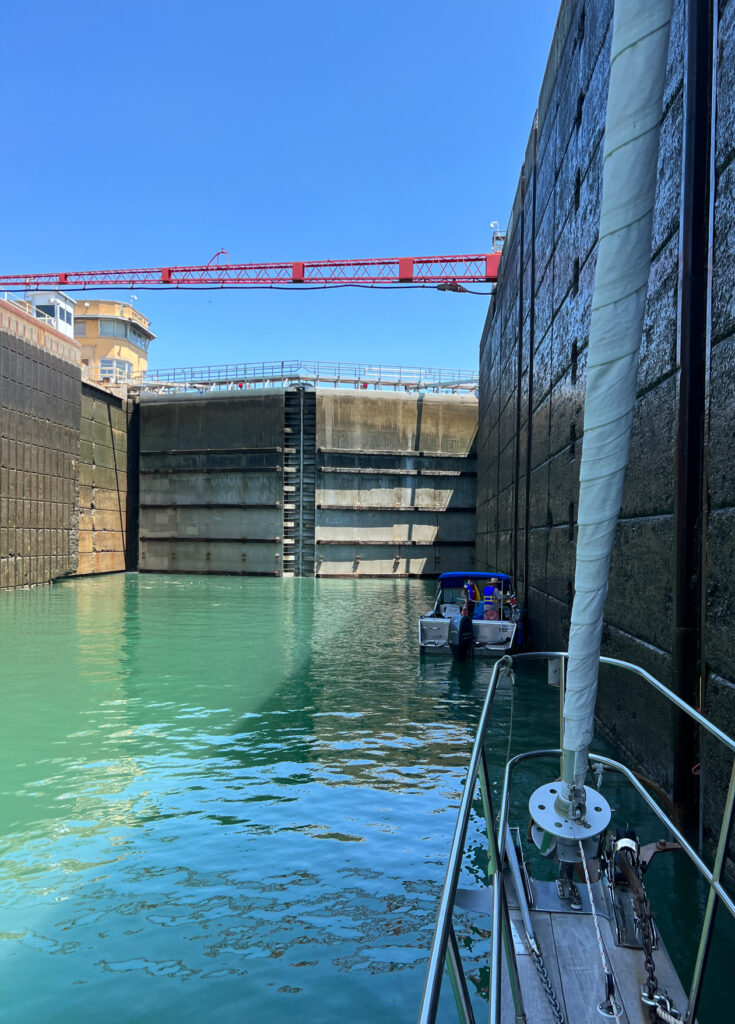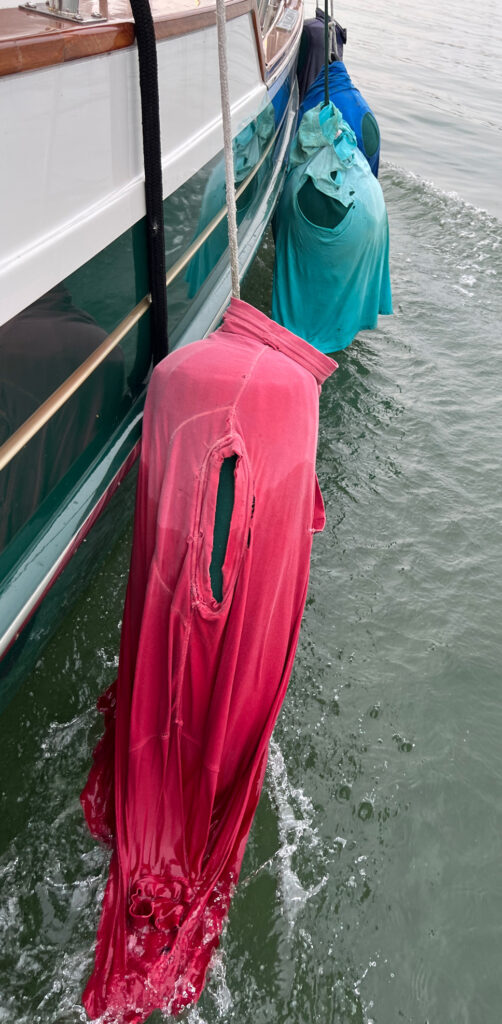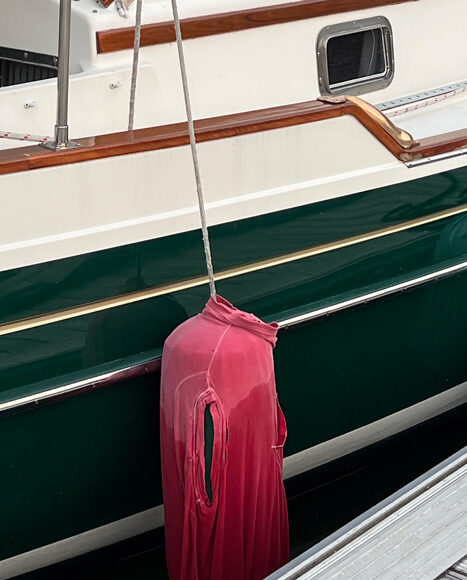Locks are a fact of life when cruising canals and rivers or transiting from one lake to another (sometimes). They are designed to avoid naturally occurring rapids and waterfalls by lowering or lifting your boat safely to the next water level in large chambers that fill or empty with water. Typically, a canal is dug adjacent to the unnavigable water course and the lock is built into the canal. We’ve locked through dozens of canals from the Soo Locks between Lake Superior and Lake Huron to the locks on the Canal du Midi in France on different boats. If you are traveling downstream, you “lock down”; traveling upstream is “locking up.”
Riding the Lock

Locks are massive, complicated concrete structures with gates and sluices and drains. The walls tend to be rough concrete and sometimes slimy. Fenders to protect Gaviidae’s side are essential as we ride up or down with the water in the lock alongside one wall or the other. The boat is nominally tethered to the wall with ropes secured to a cleat or bollard at the top.

During the slow, but sometimes turbulent, ride we have to work the ropes anchored to the top of the lock wall. They run through the boat’s cleats fore and aft. We also have to push against the wall to keep the fenders from catching on the wall and riding up (or down) and possibly damaged or torn off the boat’s lifelines. Most boaters use their boat hooks to fend off, and I have seen boaters push against the wall with their hands! We fend off with 2x2s to avoid wrecking or losing our boat hooks. (There is some history of that.) We also wear old, worn work or sailing gloves when handling the lock ropes which are always wet and often dirty and slimy.
Occasionally a boat gets tied to the outside of the tethered boat–“rafting up” in boating lingo–so they ride up and down together. Rafted boats are usually the same types of boats and of similar size: power boats get paired up, sailboats pair up. The outside boat is obliged to deploy docklines and fenders to secure and protect both boats while rafted together. Normally two boats raft up, but we witnessed three power boats rafted up recently. Sailboats have to be particularly careful not to get their mast riggings tangled in a raft up. We were rafted up with another sailboat transiting the Welland locks between Lake Erie and Lake Ontario last year.
Covers for the Fender Covers
This spring Julie made new fender covers made with green Polartec fleece to minimize wear and tear on Gaviidae’s paint job. To protect the new fender covers in locks we cover them with cheap oversized knit shirts. A couple of these covers are actually raggedy old tee and polo shirts of mine. Longtime favorites that Julie forced me to commit to our cleaning rags collection. If they were bad before, they’re really filthy and torn up after use in several lock. A few others were survivors from the Welland Canal locks.
We went through our last two locks on the St. Lawrence River June 30, so those dirty, ratty and shredded old tees and polos in the accompanying photos are being retired (trashed, to be precise.) As a tribute to these sacrificial lambs, I offer this testimonial and these photos in thanks for their lengthy service. They started out as comfortable, often colorful shirts, softening and then deteriorating over the years from wear and tear and washings. At the end, they were deployed as fender covers.
Rest in pieces, old friends. ;D
June 30, 2023 231 Nautical Miles 45°32.410’N 073°31.027’W


Good review, Dan Your shirts did a good job of protecting the fenders and the boat. Happy sailing!